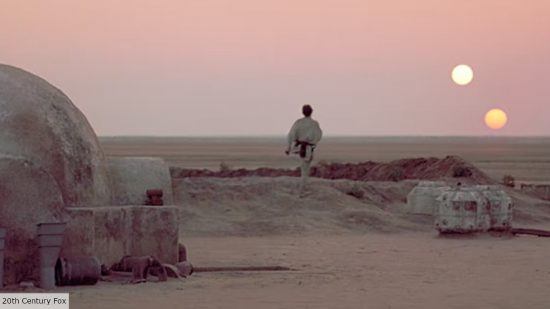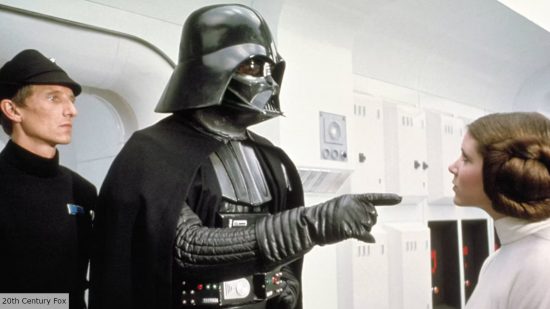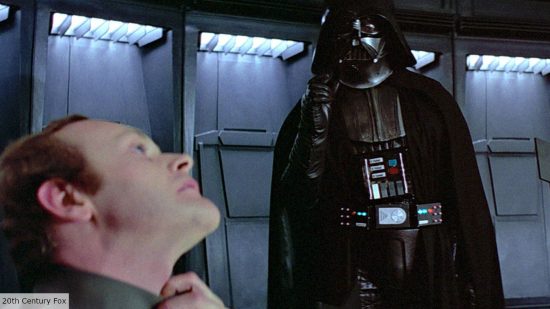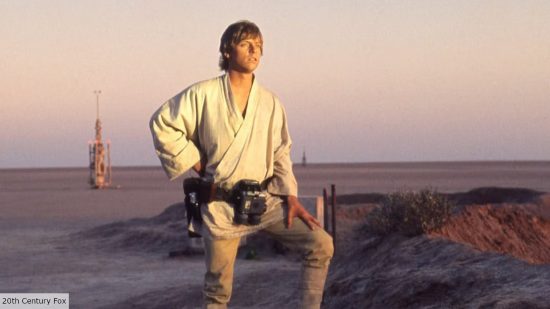Upon its release, George Lucas’ Star Wars became the highest-grossing movie of all time. Since then, the science fiction movie (now retitled and known as A New Hope) has justified a further nine live-action Star Wars movies, including two spin-offs. Out of those, five have slots in the top 50 highest grossing movies ranking, meaning that Star Wars makes up an astonishing 10% of the list.
Away from its commercial success, the critical response to the Star Wars movies subsequent to the Original Trilogy has been more unsteady. However, the groundwork for the franchise, and the fact that there are still so many new Star Wars series and – in the future – movies on the way, was laid entirely by George Lucas’ A New Hope.
A New Hope changed the cinematic landscape, and the science fiction movie genre in particular. The movie shifted the genre away from the likes of 2001: A Space Odyssey and towards action and adventure, with elements of fantasy, paving the way for countless rip-offs. It was, and remains, a masterpiece: and its sequel was even better. But before A New Hope, the production of Star Wars almost killed the project before it ever reached the big screen.
Star Wars was not formed by Lucas as an entirely original idea. Initially, Lucas’ ambition was to adapt the Flash Gordon serials into epic movies, because he’d long fantasised about their cinematic potential. But due to issues with access to the rights to Flash Gordon, in order to tell his story Lucas was forced to pivot and create his own original characters, story, and universe.

As part of this creation, Lucas imagined Tatooine as a jungle planet with great giant trees, filled with wildlife and invisible moisture. His team scouted out the Philippines as a potential location, but Lucas shifted his ideas when he came to the realisation that shooting in such an environment for extended periods of time would be uncomfortable and impractical.
Tatooine was turned into a desert planet instead, and Tunisia was selected as the real-life location for filming. This was a blessing – in that Tatooine’s desert environment could become iconic – and a curse.

Shooting in Tunisia proved just as difficult as trying to film in a jungle, due to a range of unexpected technical problems. The Tunisian sand interfered with the radio signals which controlled the droids, and R2-D2 would frequently refuse to follow its radio instructions or would act seemingly out of its own will. Other electronic issues also plagued the set, leaving Lucas running behind schedule on a project that made great use of electrical props and tools.
Then, there was also a rainstorm – rare for the country – which impacted when filming could take place, and what the environment would look like. The rainstorm caused a blurring between the sand and the sky on the camera, which Lucas wanted to lean into to add to the ‘alien’ feel of the location, but which the cinematographer disagreed with.

There were injuries too, and when Anthony Daniels stepped into his suit for the first time it shattered and stabbed him through his foot. Adding to that, he also couldn’t see with his vision being obscured by the golden costume’s eyepiece.
This, and other more general stresses of filming took their toll on the director. Lucas was so despondent and dejected during filming that the cast (who would also complain about his lack of support and direction, and who also refused to take the project seriously) would attempt to make him laugh, or even just smile. Lucas was subsequently diagnosed with exhaustion and hypertension as a direct result of working on A New Hope, and was told he needed to reduce his exposure to stress.
No luck there, though. After filming had ended and a rough cut had been drawn up a number of fellow directors and filmmakers were shown an early screening of the movie by Lucas. People in attendance included close friend Steven Spielberg, as well as Scarface director Brian de Palma. While Spielberg was entertained by the movie, the rest of this early crowd were underwhelmed and bemused.
This reaction disappointed Lucas, and caused him to think again about what he had put together.

After disagreements about the pacing and general direction of the movie, Lucas fired his first editor, John Jympson, with a new trio who included his then-wife Macia Lucas. These three editors took significantly more control over the adventure movie, resulting in major changes to what Lucas had originally imagined, instigating a whole re-editing process.
Prior to the re-edit, slow pacing and decisions to cut between multiple different perspectives and locations led to questionable results. In Lucas’ vision, the world of Star Wars was first brought to the audience through the eyes of Luke Skywalker: as the hero, the movie spent just as much time with him as it did with Darth Vader and the Galactic Empire, and the two droids and the Rebellion.
It showed Luke wandering around Tatooine completing various tasks, and talking jargon with his friends and family. In fact, the movie cut back to Luke’s story no less than three times before he buys the droids from the Jawas which, as anyone who’s seen A New Hope could tell you, is when he’s first introduced in the final cut.
This caused major pacing issues, and added to a general sense of confusion. Early eyes on the movie weren’t sure what was happening, and the building tension as the Empire hunted down the droids was being constantly deflated by Luke.
In the re-edit, Luke was introduced only when his journey intersected with the rest of the plot: when the Jawas were selling the Star Wars droids. This way, the movie felt less like the story of one person, and more about a natural sprawling adventure in space which Luke becomes ensnared in.

Other significant changes included a shift to the order in which certain scenes were delivered (for example, placing Obi-Wan Kenobi’s explanation of the Force before Darth Vader’s Force choke scene) which improved how information was conveyed to the audience; and post-production additional dialogue to increase the tension in key scenes.
The best example is that, if you can imagine it, during the Battle of Yavin when the Rebellion was attempting to destroy the Death Star, the floating space station was initially just sitting there, waiting around. In the re-edit, extra dialogue and reaction shots were inserted to make it so that the Death Star was preparing for another attack while the X-Wings were trying to destroy it, adding to an important sense of urgency and jeopardy.
Both in production and post-production, the creation of A New Hope was a waking nightmare for Lucas. Pressure from executives and constant self-doubt that his vision would fail to materialise meant that the success of Star Wars was a surprise to Lucas most of all.
The overwhelmingly positive critical and commercial reaction, and its cultural impact, meant that Star Wars would go on to become the behemoth that it still stands as today. Despite a bumpy road in recent decades, it still shows no real sign of slowing down.
However, after everything that happened on A New Hope, Lucas did decide to take a less active role in the final two Original Trilogy movies. For his own health, that will have been something his doctor was pleased to hear.
For more on Star Wars, check out our guide to the Jedi and the Sith as well as our picks for the best Star Wars characters. Or, keep up to date with the new Star Wars series with our Andor season 1 recap and find out what we know about the Andor season 2 release date. Alternatively, learn more about The Mandalorian season 3 and stay up to date with our The Mandalorian season 3 episode 1 recap.
